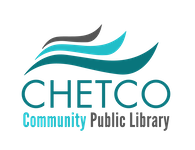Japanese herbal medicine : the healing art of kampo
(Book)
Author
Published
Garden City Park, N.Y. : Avery Pub. Group, ©1999.
Physical Desc
xi, 412 pages : illustrations ; 28 cm
Status
Chetco Community Public Library - Adult/General - Nonfiction
615.321 RISTER
1 available
615.321 RISTER
1 available
Description
Loading Description...
Also in this Series
Checking series information...
Copies
| Location | Call Number | Status |
|---|---|---|
| Chetco Community Public Library - Adult/General - Nonfiction | 615.321 RISTER | Available |
Subjects
LC Subjects
More Details
Published
Garden City Park, N.Y. : Avery Pub. Group, ©1999.
Format
Book
Language
English
Notes
Bibliography
Includes bibliographical references (pages 333-398) and index.
Description
This layperson's guide presents enough material to make a Japanese treatment method little known in the West understandable. Kampo, whose name is derived from the Chinese Kan, 'from China, ' and po, 'way, ' does not use acupuncture. Traditional Chinese medicine, Rister believes, requires the understanding of a complete philosophical system, whereas Kampo is simple, easily understood in the West, and indeed meshes well with much of modern Western medicine. Kampo is a 'no-fault' method of healing that does not point the finger of blame at the patient. Keisetsu Otsuka, a twentieth-century Japanese physician, has done much to give Kampo scientific validity in the West. Rister provides a brief history of Kampo and a detailed account of specific herbs including descriptions, indications of the parts of the plants that are used, and reports of scientific findings and clinical experience. A major section shows how the herbs are used in specific diseases. Appendixes give sources of Kampo products and services.
Description
Detailed, clear instruction in Japanese herbal medicine (called Kampo) that once again makes clear that the advice of a knowledgeable practitioner is paramount. Rister, an expert in Kampo, explains that it is rooted in Chinese practices. Therefore, Kampo 'considers both physical and emotional conditions to be a reflection of balance in the four basic patterns': those being yin/yang, hot/cold, excess/deficiency, and interior/exterior. The remedies are all oral (no acupressure points are used, for instance). Rister explains the underlying philosophies of treatments and then describes the herbs used and how they are made into treatment formulas. Ginger, for one, is attributed a wide range of medicinal actions, including 'lowering of cholesterol levels, providing relief for allergies and asthma, arthritis, colds, and nausea, and protecting the body against toxins and parasites.' The bulk of this guide is then given over to discussion of the underlying problems and treatments of a lengthy list of diseases and disorders-bedwetting, endometrial cancer, diabetic retinopathy, and seizure disorders are among those considered. Kampo involves a blend of ancient and modern medicine; as Rister points out, for centuries few men lived long enough to develop prostate cancer, so Kampo has no theory of the cancer. Thus, modern Kampo practitioners link their treatments to symptom patterns, instead. Too complicated for self-treatment, really, but a worthwhile view of the possibilities offered by another medical world.
Reviews from GoodReads
Loading GoodReads Reviews.
Citations
APA Citation, 7th Edition (style guide)
Rister, R. (1999). Japanese herbal medicine: the healing art of kampo . Avery Pub. Group.
Chicago / Turabian - Author Date Citation, 17th Edition (style guide)Rister, Robert. 1999. Japanese Herbal Medicine: The Healing Art of Kampo. Avery Pub. Group.
Chicago / Turabian - Humanities (Notes and Bibliography) Citation, 17th Edition (style guide)Rister, Robert. Japanese Herbal Medicine: The Healing Art of Kampo Avery Pub. Group, 1999.
MLA Citation, 9th Edition (style guide)Rister, Robert. Japanese Herbal Medicine: The Healing Art of Kampo Avery Pub. Group, 1999.
Note! Citations contain only title, author, edition, publisher, and year published. Citations should be used as a guideline and should be double checked for accuracy. Citation formats are based on standards as of August 2021.
